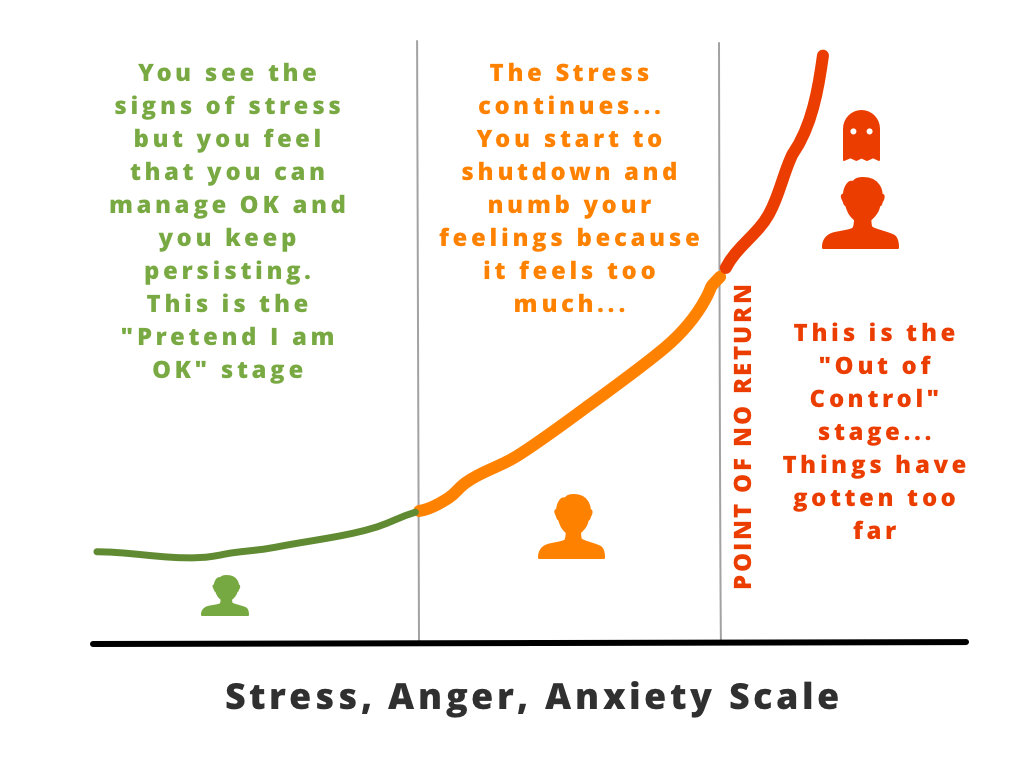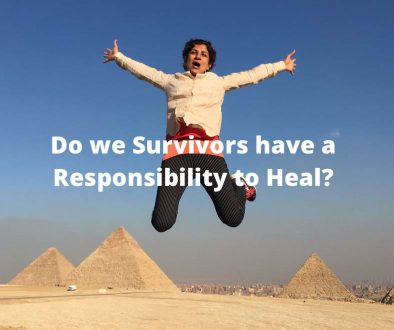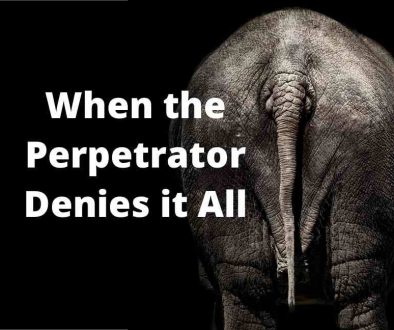Restoring Emotional Safety for Survivors (Part 2 of 3)
It’s a month of Safety here at Healing Wounds Together. Our journey started with this blog For Survivors, it All starts from Never Feeling Safe… Here is how. I described how “never feeling safe” is at the core of our trauma symptoms. I talked about never feeling safe physically, emotionally and sexually.
In my last week’s blog Restoring Physical Safety for Survivors (Part 1 of 3), we tackled the aspect of physical safety.
This blog is all about Emotional Safety. Sometimes we don’t feel safe from our own emotions especially when we are feeling angry or anxious. It feels that things will go out of control if we let it go. Other times, it’s other people’s anger or”out of control” behaviour that makes us feel unsafe.
It comes back to resilience. When we experience trauma, we go into fight/flight/freeze response. Repeated traumatic experiences would mean that the brain would constantly engage these survival modes leaving us to believe that we can’t handle our emotions.
This is why we become afraid to feel our emotions. We feel like we can’t handle it because we couldn’t handle it in the past. The truth is that you can… You just have to start slowly and notice that you can… 🙂
Before we delve into this, I want to introduce you to Dr. Seligman from Authentic Happiness. He and his team have dedicated their lives to understanding and creating happiness and the associated qualities that one must nurture. One of the things I learnt from these series of lectures was to understand Stress Scale and Resilience Scale. and I am going to demonstrate it for you. Why? Because I believe that if you understand how this scale works for you, you will also know how to create emotional safety for yourself.
This is how I have instinctively done it but now I have a proper way to explain it as well 🙂
Stress Scale – Learning about your Green, Orange and Red Zone
If you think about anger, anxiety or other forms of extreme emotions you will notice that the intensity of these emotions progresses in stages (as shown in the diagram below)

When the signs of stress start to appear, we feel that we are strong and we can deal with it (green zone) so we don’t do anything. Becoming relaxed is sorta not a priority at this stage because we can function without doing anything to re-balance us.
Things keep getting from bad to worse and now we start to worry (orange zone). It feels like we are going to lose it and we don’t really know what to do. We try to shut down, do some meditation but that doesn’t seem to help a lot and it gets worse. Soon we reach the point of no return (red zone). This is where all hell breaks loose.
The problem is that we only start to notice things when they are about to get out of control. Before this stage, things seem stressful but it feels like we can manage.
Imagine if you can work out how to bring yourself back to “normal” state from each of the green or orange zones. This requires becoming aware of what constitutes a stage for you and what are your unique symptoms and actively exploring your unique way of rebalancing. But instead I hear survivors say things like:
“It feels so bad. How can I make it go away”
“I don’t want to feel this way.”
They are all very valid desires but the problem is that we don’t take action when we are in the green zone. We start to panic only when we get closer to our point of no return. By then, it is already too late.
Becoming Aware of your Stress Scale
There are various ways to become aware of your Stress Scale. In my blog First Steps toward the Healing Journey, I explain the idea of becoming aware of body sensations. This is crucial if you were to understand your own stages of how anxiety/stress/anger progresses for you. When you go through emotionally intense states, make sure that you “take note” of body sensations. Over a period of time, you will start to see a pattern. You will start to see the symptoms that you show when you are going through these phases.
The second method is via reflection. Once the phases have ended and you are back to normal, reflect on how it started. what was the trigger and how it progressed? This should also help you determine the phases of your Stress Scale.
Learning to identify Resilience Strategies
We all have this innate ability inside us to identify when things work. The idea is to keep exploring and seeing how you feel after. Dr. Babbette Rothschilde calls it a “Resources List” and I also talk about it in my blog mentioned above. The key is to discover which strategy works for which of your stress phases.
As you discover your pattern, you will also start to discover what method works for you in each stage if you were to bring yourself back to normal. It could be as simple as Slow breathing, meditation or a walk perhaps and as complicated as going to therapy. Whatever it may be, take a note of when you need it and what it does for you.
Creating Emotional Safety via Resilience
Once you are able to identify your stages of emotional intensity, and you know what works for you. You will notice that the “fear” of not feeling safe will start to ease. Your brain will start to notice that you “can” handle these emotional states and the more you can manage, the safer you will feel.
You will not reach the Point of No Return because you would start to implement and build resilience in the earlier stages of the stress.
If you are feeling unsafe because someone else around you is losing it, the same principle applies. Are you or are they able to identify their stage before it is too late? Because if you can or they can, you can start communicating with each other and make adjustments for each other. In my future blogs, I will handle the issue of communications (if you want to work on the communication, just google Marshall Rosenberg 🙂
Summary of Steps for creating Emotional Safety
In my view, Emotional Safety is similar to building Resilience. As you take small steps, your brain starts to create space for you to do it more and more… And then the time comes when you know that you can handle anything
Here is a quick summary of the steps for what I have described above:
- Identify the signs of green, orange and red zone for you
- Know when your “Point of No Return” is
- For each stress zone, create a list of activities that work for that zone and can bring you back to normality.
- If you are around people (who you can’t communicate with) and you start to feel unsafe, then find a way to leave
- If you are around people (who you can communicate with) then work with them to find out what the signs for their green, orange and red zone. Once you identify them, you can easily start to take steps to bring the situation back to reality.
- It’s important to know how to communicate your needs for each phase and the consequences if you don’t address your needs. This will help people around you understand what’s going on for you and be willing to help.
My own Stress Scale and how I manage my Resilience
I would like to share my own Stress Scale with you so that you get an idea and are able to apply it in your life.
My Green Zone
When things start to go bad for me, the first thing that happens is that I feel very very tired even if I have slept for 10 hours a night. It feels like that food is not giving me energy and I want to eat junk food. I get headaches and I am generally not smiling as much as I normally do
The things that work for me at this stage are journaling, some Me time, meditation and Osteopathy.
My Orange Zone
My digestion system goes completely out of whack. My headache gets worse. and now my body starts to contort itself. My shoulders slump forward, my neck starts to hurt. I sleep loads but I am always tired. My brain feels foggy and my attention starts to get weak. I start to have to breakdowns and even little things make me cry.
This is the stage for me to seek therapy. In addition to what I do in the green zone, I seek therapies such as Network Chiro, Counselling, Gestalt therapy. If my situation is too bad, I then look for more intense therapies such as Past Life Healing and Hypnotherapy.
My Red Zone
It has been a while since I have reached my Point of No Return so I can’t really share what happens to me. I am glad that I am aware of how my state changes and am able to bring myself back to normality. I am also grateful to the universe to provide me with the resources I need when I need’em.
I hope that by sharing this blog and my experiences, I have created a possibility for you to build resilience. I know we all can because I know that I did… I know that the universe will not throw anything at us that we can’t handle… We need just a bit of courage and I am here to let you know that you are going to be OK. You can take small steps towards the end of the tunnel and before you know it, you will be at the other end
Blessings



